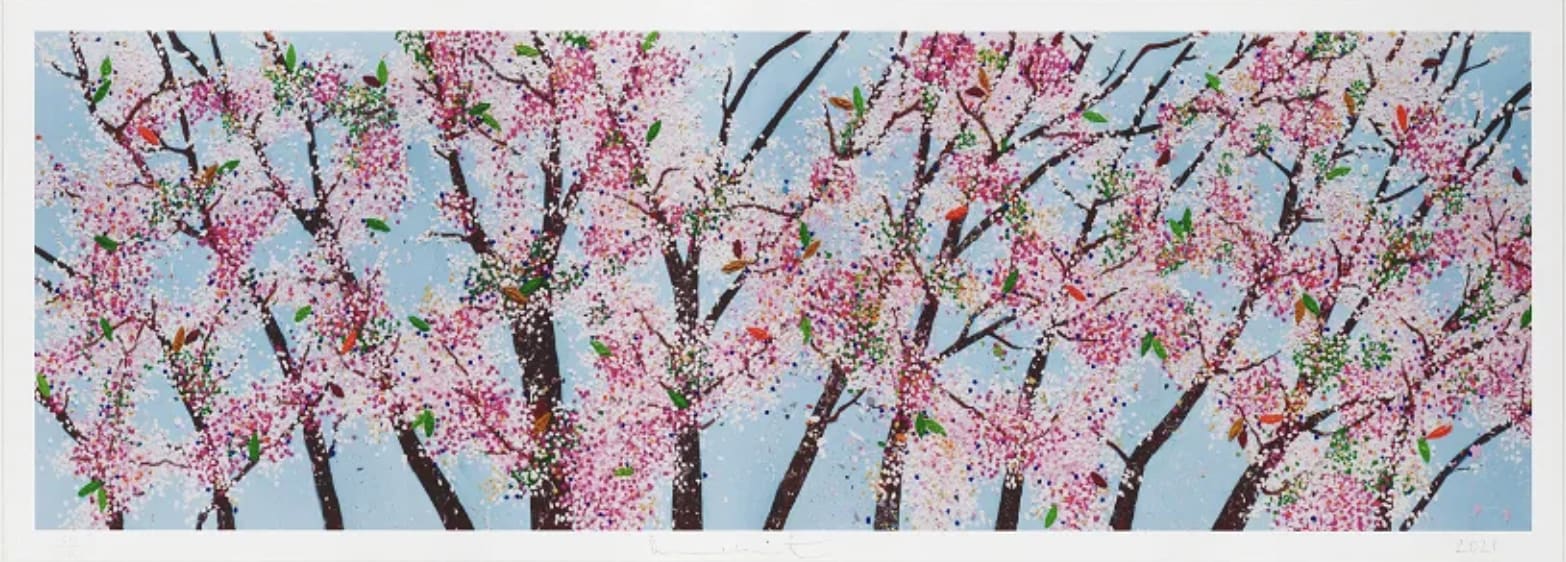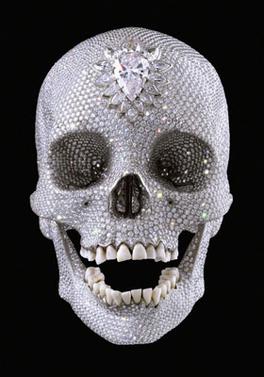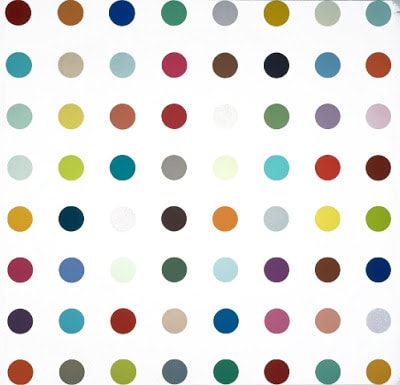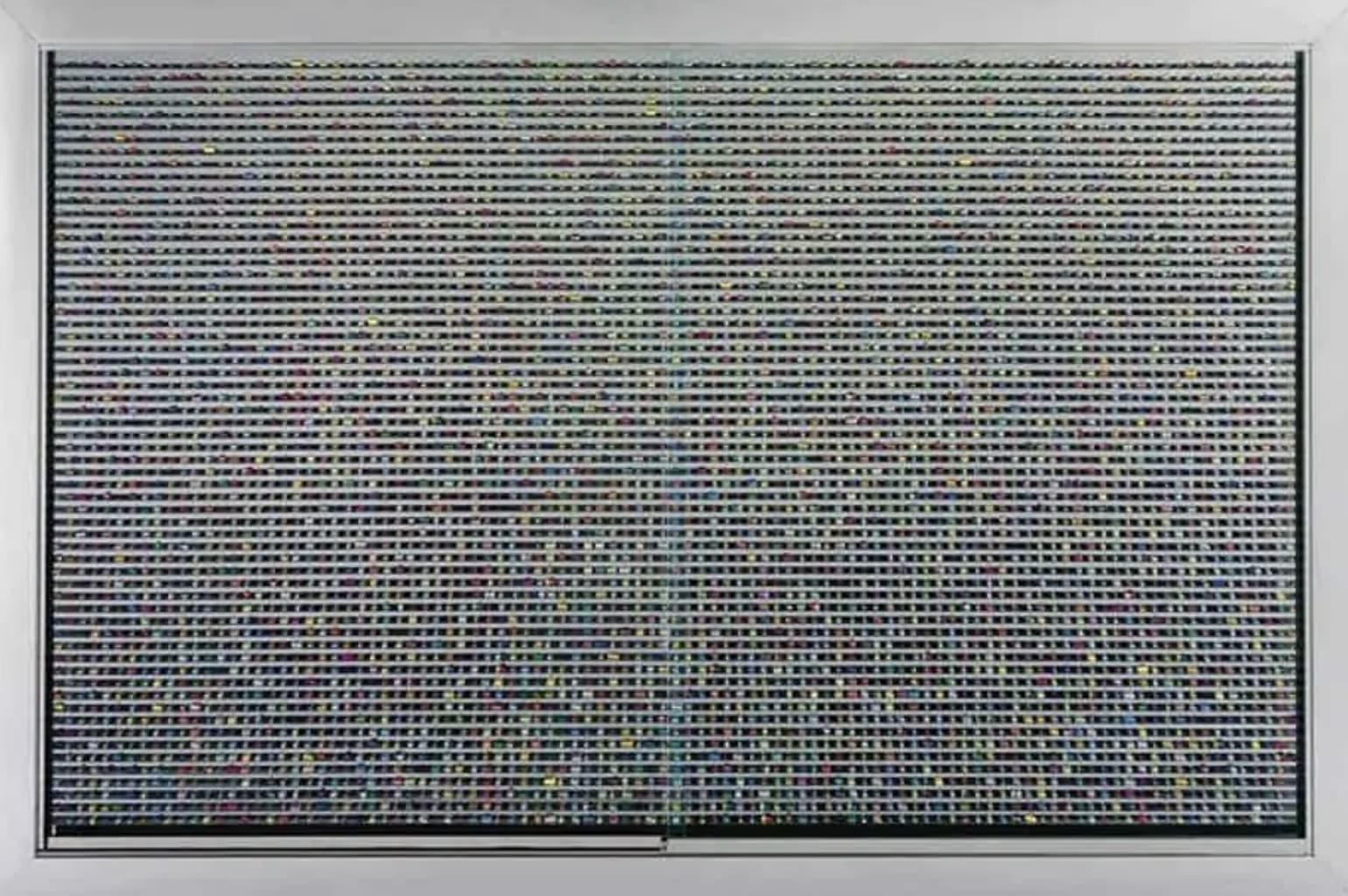Damien Hirst (b. 1965, England) emerged from modest origins - born Damien Steven Brennan in Bristol, raised in Leeds - and would go on to become one of the most well-known and polarizing figures of contemporary art.
Hirst studied at Goldsmiths College in London and during his student years helped organise the 1988 exhibition Freeze, an event which is often cited as the launching pad for the Young British Artists (YBAs) movement.

His artistic practice is bold, concept-driven, and steeped in the themes of life, death, science, religion, value, spectacle. He works across media: installations (famous for preserved animals in formaldehyde tanks), large-scale sculpture, painting (such as his "spot" paintings), mixed media.
Key characteristics of his practice:
-
The shock of the everyday turned monumental (a shark, a cow, preserved in vitrine).
-
Use of luxury materials, preciousness, and cost of production (for example, diamonds, platinum).
-
The conflation of art with brand, spectacle, market mechanics (how his work enters the collector/auction world).
-
A strong conceptual underpinning: the objects in his work are as much ideas as physical things.
Hirst's rise is inseparable from his timing and his association with the YBAs and collector/maverick Charles Saatchi. In the early 1990s, Hirst was newly graduated and exhibiting in short-run shows like Modern Medicine, Gambler, etc.
Some turning points:

-
His 1992 work The Physical Impossibility of Death in the Mind of Someone Living: a 14-ft tiger shark preserved in formaldehyde in a vitrine. Huge splash.
-
1995 he won the Turner Prize.
-
Through the late 1990s and early 2000s, his name became synonymous with the idea of the contemporary art star: lavish productions, media-friendly spectacle, strong market presence.
-
In 2008, Hirst broke convention by bypassing his established galleries and selling a full show at auction: the landmark event Beautiful Inside My Head Forever at Sotheby's, raising something on the order of US$ 198 million for the sale of works by a living artist.

All of this cemented his position not merely as a talented artist, but as a brand - an artist whose work is about more than the image, it's about the idea, the market, the spectacle, the tens of millions at auction.
While Hirst has a large oeuvre, several works stand out as icons of his practice and have defined-moments in the art world. Here are a few:
-
The Physical Impossibility of Death in the Mind of Someone Living (1991) - the iconic shark in formaldehyde. This is arguably his signature work.
-
A Thousand Years (1990) - a glass vitrine containing a severed cow's head, flies hatching, feeding, dying. A visceral meditation on life and death.
-
For the Love of God (2007) - a human skull cast in platinum, encrusted with 8,601 diamonds, weighing 1,106.18 carats. A bold commentary on mortality and value.

-
Spot paintings - while not one single work, his spot painting series (rows of coloured dots) are visually iconic and often quoted when talking about Hirst's more "colourful" non-shocking work.

-
Medicine cabinets / pill cabinets - e.g., Lullaby Spring (2007) - a steel cabinet filled with 6,136 pills. Sold for over US$19 M.
Hirst has set and broken records for living artists, which is significant when considering market and investment discussions.
-
Lullaby Spring (2007): According to some sources, the record auction price for Hirst was around US$19.2 million (or equivalent) when this work sold.

-
Beautiful Inside My Head Forever (2008): The one-artist auction raised ~US$198 million for the night, showing the scale of the market interest.
-
Hirst's pieces appear again and again in ranking lists of the most expensive works by living artists.
When considering art as an investment, Hirst presents great opportunities. Here are some of the positive factors:
-
Recognition & brand strength: Hirst is a household name in contemporary art; his major works are part of art-history narratives. That name recognition helps establish value.
-
Market track record for high end: We have examples of his work fetching very high prices at auction, so the "ceiling" of his price potential is proven.
-
Editioned / series work potential: If one selects pieces from desirable series (spot paintings, cabinet works, limited edition sculptures) and ideally with favourable provenance, there may be upside.
-
Scarcity and marquee works: Owning one of his major works (especially a historically significant piece) offers collector prestige and potential for value-growth given cultural importance.
-
Contemporary relevance + institutional interest: His works are held in major museums, referenced in art history, which supports long-term value beyond purely market speculation.
What a collector/strategist should look for:
-
A work which has strong provenance (exhibited, referenced in catalogue, from a significant series).
-
Condition, documentation, authentication.
-
Relevance of the particular work in Hirst's oeuvre (is it a "milestone" piece, or a later-run edition?).
-
Consideration of long horizon: contemporary art investments often require patience; not all gains happen quickly.
-
Diversification: as with any investment, art is part of a larger portfolio of assets - only some pieces will appreciate strongly.
-
Exit strategy: know how easy/difficult resale may be, especially outside the major marquee works.
Damien Hirst occupies a pivotal place in contemporary art: as a provocateur, a conceptual heavyweight, and a market phenomenon. His practice-rooted in the big ideas of life, death, value and spectacle-opened up new territory in art and continues to command attention. For a collector, acquiring a Hirst make sense as part of a strategic collection.

